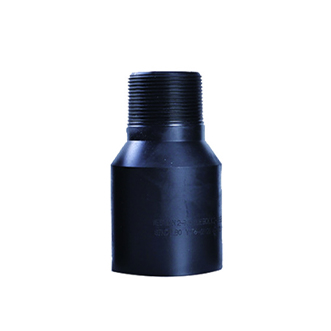- Afrikaans
- Albanian
- Amharic
- Arabic
- Armenian
- Azerbaijani
- Basque
- Belarusian
- Bengali
- Bosnian
- Bulgarian
- Catalan
- Cebuano
- Corsican
- Croatian
- Czech
- Danish
- Dutch
- English
- Esperanto
- Estonian
- Finnish
- French
- Frisian
- Galician
- Georgian
- German
- Greek
- Gujarati
- Haitian Creole
- hausa
- hawaiian
- Hebrew
- Hindi
- Miao
- Hungarian
- Icelandic
- igbo
- Indonesian
- irish
- Italian
- Japanese
- Javanese
- Kannada
- kazakh
- Khmer
- Rwandese
- Korean
- Kurdish
- Kyrgyz
- Lao
- Latin
- Latvian
- Lithuanian
- Luxembourgish
- Macedonian
- Malgashi
- Malay
- Malayalam
- Maltese
- Maori
- Marathi
- Mongolian
- Myanmar
- Nepali
- Norwegian
- Norwegian
- Occitan
- Pashto
- Persian
- Polish
- Portuguese
- Punjabi
- Romanian
- Russian
- Samoan
- Scottish Gaelic
- Serbian
- Sesotho
- Shona
- Sindhi
- Sinhala
- Slovak
- Slovenian
- Somali
- Spanish
- Sundanese
- Swahili
- Swedish
- Tagalog
- Tajik
- Tamil
- Tatar
- Telugu
- Thai
- Turkish
- Turkmen
- Ukrainian
- Urdu
- Uighur
- Uzbek
- Vietnamese
- Welsh
- Bantu
- Yiddish
- Yoruba
- Zulu
Efficient Techniques for Using a Pipe Threader in Plumbing and DIY Projects
Understanding Pipe Threaders Essential Tools for Plumbing and Construction
In the realm of plumbing and construction, few tools are as essential as the pipe threader. This device is designed to create screw threads on the end of a pipe, enabling easy connections between different pipes and fittings. The importance of pipe threaders cannot be overstated, as they play a crucial role in ensuring the integrity and functionality of plumbing systems in residential, commercial, and industrial settings.
The Basics of Pipe Threading
Pipe threading involves cutting grooves into the surface of a pipe so that it can be screwed into a fitting or another pipe. This process creates a tight seal that prevents leaks, a critical requirement in any plumbing system. Without properly threaded pipes, water could leak or systems could fail, leading to costly repairs and significant inconvenience.
Pipe threaders come in various forms, including manual, electric, and hydraulic models. Each type has its advantages and specific applications. Manual threaders are often used for smaller pipes or in situations where power access is limited. Electric threaders enable faster threading for larger jobs, while hydraulic threaders are ideal for heavy-duty applications, particularly in industrial environments.
Choosing the Right Pipe Threader
When selecting a pipe threader, several factors must be considered. The size of the pipes you'll be working with is crucial, as threaders are designed to handle specific pipe diameters. Additionally, understanding the material of the pipes (such as steel, PVC, or copper) is vital because different materials may require different threading techniques or tools.
Another aspect to consider is the frequency of use. For professionals who regularly thread pipes, investing in a high-quality electric or hydraulic threader may be worthwhile for the enhanced efficiency and durability. On the other hand, occasional DIY users may find manual threaders sufficient for their needs.
pipe threader

The Threading Process
The process of threading a pipe involves several key steps. First, the pipe must be cut to the desired length, ensuring a clean edge for effective threading. Next, the surface of the pipe is cleaned to remove any debris or rust that may compromise the threading process. The threader is then placed over the pipe, and the threading operation commences.
During this time, it's critical to apply appropriate amounts of cutting oil to reduce friction and heat, resulting in cleaner threads and prolonging the life of the tooling. Once the threading is complete, the pipe should be inspected for any imperfections or irregularities that could lead to leaks.
Maintenance and Care
Like all tools, pipe threaders require regular maintenance to ensure optimal performance. Keeping the threader clean, particularly the cutting tools, is essential. Regularly inspecting for any wear or damage will help avoid issues during threading operations. Additionally, storing the threader in a dry, secure location will prevent rust and degradation over time.
Conclusion
A pipe threader is a vital tool for anyone involved in plumbing and construction. Its ability to create secure, leak-proof connections between pipes makes it an indispensable component of any trade toolkit. Whether you're a professional plumber or an enthusiastic DIYer, understanding the function and care of a pipe threader will undoubtedly enhance your plumbing projects and ensure their success. By investing in the right threading tool and mastering the threading process, you take a significant step towards achieving efficiency and reliability in your plumbing work.
-
Tubing Pup Joints: Essential Components for Oil and Gas OperationsNewsJul.10,2025
-
Pup Joints: Essential Components for Reliable Drilling OperationsNewsJul.10,2025
-
Pipe Couplings: Connecting Your World EfficientlyNewsJul.10,2025
-
Mastering Oilfield Operations with Quality Tubing and CasingNewsJul.10,2025
-
High-Quality Casing Couplings for Every NeedNewsJul.10,2025
-
Boost Your Drilling Efficiency with Premium Crossover Tools & Seating NipplesNewsJul.10,2025







